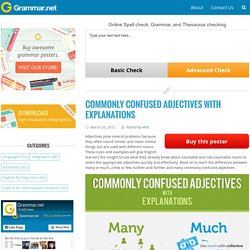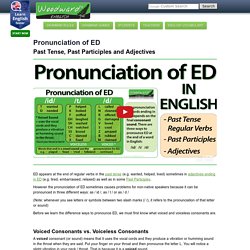

English Idioms in alphabetical lists with meaning and example. 1000+ Most Popular English Idioms and Their Meanings. Pinterest. Teacher Training Handouts. ESL Lesson Plans & Worksheets for Teachers. ESL Teacher Handouts, Grammar Worksheets and Printables. Free English grammar and vocabulary worksheets and printable handouts, for English language and English as a Second Language (ESL) teachers and instructors to use in the classroom or other teaching environment. Get our ESL handouts newsfeed: Beginner English Handouts Adjectives and Adverbs Articles Comparatives & Superlatives Conjunctions Determiners A, An, Some or One (8) General Modals Must & Can (10) Nouns Parts of Speech Prepositions Present Simple Pronouns Pronunciation Pronunciation of 'th' (10) Questions Relative Pronouns.
ESL Lesson Plans & Worksheets for Teachers. I’ve been teaching my kids about the parts of speech in our writer’s workshop lately.

I started with a quick overview about how our words do jobs for us. We used this Parts of Speech worksheet to briefly go over the parts of speech so the kids could understand what they were and the jobs they do in writing and speech. Then I assigned a part of speech to each day and we did some activities to help reinforce the ideas over the next couple of weeks. Click on the picture to get the printable Parts of Speech worksheet. Parts of Speech Activities We Did: Watched the Schoolhouse Rock Grammar Rock Videos that went with each part of speech.
The biggest sheet is a full size sheet of construction paper. Of course, we’ll keep adding to these as we come across interesting words, and my kids now have their flip books by their side as they write so they can get ideas for vivid words and remember to use lots of description and full sentences as they write. More From Layers of Learning Love these ideas? Commonly Confused Adjectives with Explanations. Buy this poster Adjectives pose several problems because they often sound similar and mean similar things but are used with different nouns.

These rules and examples will give English learners the insight to use what they already know about countable and non-countable nouns to select the appropriate adjectives quickly and effectively. Read on to learn the difference between many or much, a few or few, further and farther and many commonly confused adjectives. To download high-resolution poster click here Embed this image to your site: <a href=" src=" alt="" /></a>[Infographic provided by <a href=" Many – Much Although these two quantifiers sound similar, function in a similar manner and mean similar things, they cannot be used interchangeably. Few – A Few A few represents a positive quantity, but it can only be used with countable nouns. English skills. Grammar Exercises - Pre-Intermediate. Page Five. English Grammar Games - Juegos para aprender inglés gratis.
Pronunciation of ED in English. ED appears at the end of regular verbs in the past tense (e.g. wanted, helped, lived) sometimes in adjectives ending in ED (e.g. tired, embarrassed, relaxed) as well as in some Past Participles.

However the pronunciation of ED sometimes causes problems for non-native speakers because it can be pronounced in three different ways: as / id /, as / t / or as / d / (Note: whenever you see letters or symbols between two slash marks (/ /), it refers to the pronunciation of that letter or sound) Before we learn the difference ways to pronounce ED, we must first know what voiced and voiceless consonants are. Voiced Consonants vs. Voiceless Consonants A voiced consonant (or sound) means that it uses the vocal cords and they produce a vibration or humming sound in the throat when they are said.
A voiceless sound (sometimes called an unvoiced sound) is when there is no vibration in your throat and the sound comes from the mouth area. 1. Wanted (sounds like "want-id") waited needed folded 2. 3. All you need to know about reflexive pronouns Infographic Todo lo que necesitas saber sobre pronombres reflexivos InfografíaCursos de Inglés en el Extranjero. Infographic Reflexive Pronouns – Infografía con Pronombres Reflexivos 2.8K Flares2.8K Flares × All you need to know about reflexive pronouns #Infographic Todo lo que necesitas saber sobre pronombres reflexivos #Infografía by @Grammarnet.

ED. CAN/CAN'T. CONDITIONALS. COMP & SUP. CONT VS UNCOUNT. MISC GRAMMAR. MODALS. PASSIVE. PLURALS. PREPOSITIONS. REPORTED SPEECH. TENSES. THE TIME.